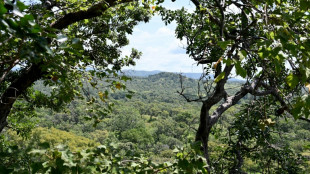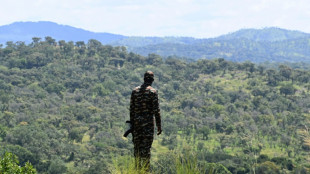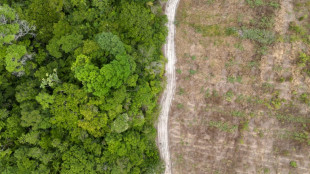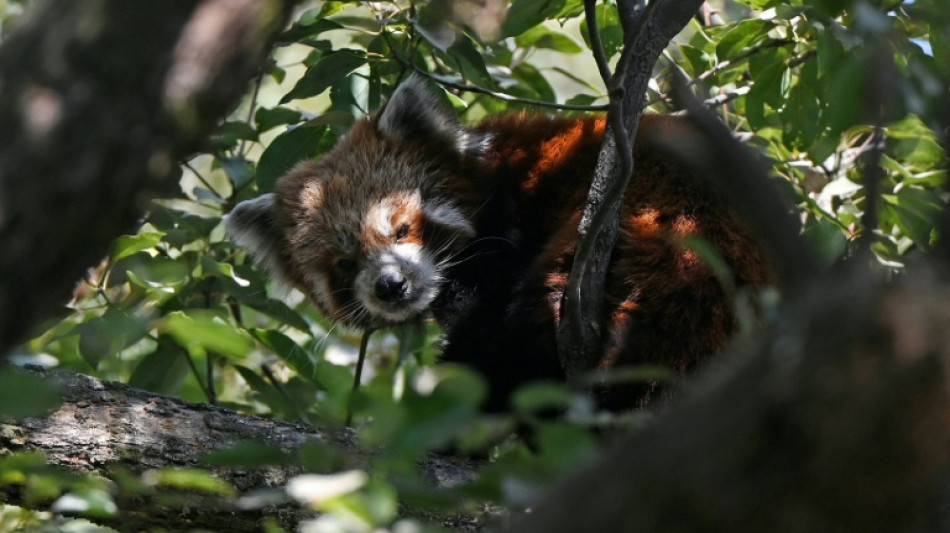
-
 Mbappe's Real Madrid extend Liga lead, Villarreal move second
Mbappe's Real Madrid extend Liga lead, Villarreal move second
-
Salah savours 'great feeling' after 250th Liverpool goal

-
 Ethical Diamond surges to upset win in $5 million Breeders' Cup Turf
Ethical Diamond surges to upset win in $5 million Breeders' Cup Turf
-
Kinghorn kicks Toulouse to Top 14 summit

-
 Mbappe extends Real Madrid's Liga lead in Valencia rout
Mbappe extends Real Madrid's Liga lead in Valencia rout
-
All Blacks sink 14-man Ireland 26-13 in Chicago Test

-
 World champ Malinin takes lead at Skate Canada
World champ Malinin takes lead at Skate Canada
-
Liverpool snap losing streak as Salah hits 250 goals in Villa win

-
 Salah's 250th Liverpool goal sinks Villa as Arsenal cruise at Burnley
Salah's 250th Liverpool goal sinks Villa as Arsenal cruise at Burnley
-
Morant suspended by Grizzlies after rebuking coaching staff

-
 Spalletti begins Juve tenure with win at Cremonese but Napoli held
Spalletti begins Juve tenure with win at Cremonese but Napoli held
-
Frank refuses to condemn Van de Ven, Spence for snub in Spurs defeat

-
 France superstar Dupont extends Toulouse deal
France superstar Dupont extends Toulouse deal
-
Egypt officially opens grand museum near pyramids

-
 French fraud watchdog reports Shein for 'childlike' sex dolls
French fraud watchdog reports Shein for 'childlike' sex dolls
-
Scotland thrash USA before All Blacks' clash

-
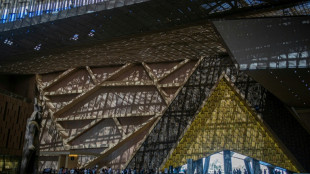 Five things to know about the Grand Egyptian Museum
Five things to know about the Grand Egyptian Museum
-
Bayern rest stars but ease past Leverkusen before PSG clash

-
 Dead quiet: Paris Catacombs close for renovations
Dead quiet: Paris Catacombs close for renovations
-
Families separated, children killed as survivors flee Sudan's 'apocalyptic' El-Fasher
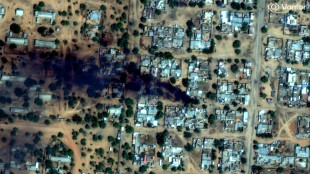
-
 Napoli held by Como as Spalletti begins Juve adventure
Napoli held by Como as Spalletti begins Juve adventure
-
Southampton boss Still vows to fight on as pressure mounts

-
 Borthwick hails 'ball of energy' Pollock as England down Australia
Borthwick hails 'ball of energy' Pollock as England down Australia
-
Egypt opens grand museum in lavish, pharaonic ceremony

-
 Joao Pedro strikes at last as Chelsea edge past Spurs
Joao Pedro strikes at last as Chelsea edge past Spurs
-
Ohtani to open for Dodgers in World Series deciding game seven

-
 Understrength Bayern sail past Leverkusen before PSG clash
Understrength Bayern sail past Leverkusen before PSG clash
-
Ramos header earns PSG late win over Nice

-
 Arteta hails Arsenal's 'exceptional' first half as leaders sink Burnley
Arteta hails Arsenal's 'exceptional' first half as leaders sink Burnley
-
Two more suspects charged over Louvre heist

-
 More than $2 mn in weapons seized in deadly Rio anti-drug raid: govt
More than $2 mn in weapons seized in deadly Rio anti-drug raid: govt
-
Feinberg-Mngomezulu guides South Africa to big win over Japan

-
 Pollock shines as England eventually overpower Australia
Pollock shines as England eventually overpower Australia
-
Villarreal crush Rayo to move second, Atletico beat Sevilla

-
 Sinner crushes Zverev to reach Paris Masters final, brink of No. 1
Sinner crushes Zverev to reach Paris Masters final, brink of No. 1
-
Pollock shines as England beat Australia in Autumn opener

-
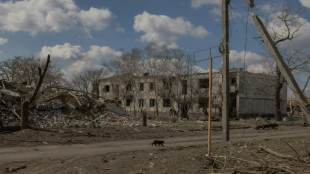 Ukraine sends special forces to embattled eastern city
Ukraine sends special forces to embattled eastern city
-
Arsenal cruise against Burnley as Man Utd held

-
 Pollock shines as England beat Australia 25-7 in Autumn Nations Series
Pollock shines as England beat Australia 25-7 in Autumn Nations Series
-
Gyokeres on target as leaders Arsenal beat Burnley

-
 Woman charged over Louvre heist tears up in court
Woman charged over Louvre heist tears up in court
-
Diomande dazzles as Leipzig go two points behind Bayern

-
 Auger-Aliassime downs Bublik to reach Paris Masters final
Auger-Aliassime downs Bublik to reach Paris Masters final
-
Villarreal crush Rayo to move second in La Liga

-
 Female suspect, 38, charged in Louvre heist: AFP
Female suspect, 38, charged in Louvre heist: AFP
-
US not sending any high-level officials to COP30

-
 India captain Kaur sees World Cup final as possible turning point
India captain Kaur sees World Cup final as possible turning point
-
'Not out of the woods': What now for Britain's ex-prince Andrew?

-
 Tens of thousands of Serbians mark first anniversary of deadly train station collapse
Tens of thousands of Serbians mark first anniversary of deadly train station collapse
-
Tanzania president wins 98% in election as opposition says hundreds killed


Nepal community efforts revive red panda population
Nepali police officer Jiwan Subba still feels pangs of regret decades after he bludgeoned a strange creature he found wandering in his barn, not realising it was an endangered red panda.
Red pandas may share a similar name to giant pandas -- due to their bamboo diet -- but the copper-hued mammals with raccoon-like features are much smaller, typically the size of a house cat.
"I was 17 and had no idea what it was. Nobody in our village even knew," Subba, now 48, told AFP.
Today, he is not only aware of the red panda's vulnerability but is actively involved in its protection -- reflecting a broader shift in attitudes spurred by Nepal's extensive community awareness programmes.
"I once took a life out of ignorance, but now I work to prevent others from making the same mistake," he said.
"People now understand that red pandas are a protected species."
Officials say that Nepal's pioneering community-based conservation work has helped arrest the decline of the cute but skittish bamboo-eaters, which number fewer than 10,000 globally.
Red Panda Network, an organisation leading global efforts to conserve the animal, estimates between 500 and 1,000 of the species live in Nepal.
That is an almost certain increase from an estimated population of somewhere between 300 and 600 by the Himalayan republic's wildlife department in 2011.
"Now, villagers say they can see three or four red pandas on the same day," Red Panda Network's Ang Phuri Sherpa told AFP.
- 'Undisturbed' -
Conservationists say that educational outreach combined with sustainable livelihood programmes has helped improve the effectiveness of Nepal's conservation efforts.
In eastern Nepal, Indigenous inhabitants of the Kanchenjunga Conservation Area switched from raising livestock to cultivating nettle plants to minimise disturbances to red panda habitats.
"We have stopped foraging in the forest so red pandas remain undisturbed," said Chandra Kumari Limbu, a local working on conservation efforts.
Instead, the rhythmic clap of looms now fills the village from women weaving nettle fabric into school bags, wallets and clothing.
"This has empowered women here who did not have an income before. And at the same time we are letting red pandas thrive," Limbu told AFP.
Nepal last year also declared a new conservation zone in the country's east to protect red pandas.
The Puwamajhuwa Community Red Panda Conservation Area, spanning 116 hectares (287 acres), has dedicated anti-poaching and smuggling control committees with local involvement.
- Poaching and infrastructure -
Nepali authorities have confiscated 33 red panda hides from smugglers in the past five years, a drop from 70 hides from 2011-15.
"The number of red panda hides being smuggled has significantly come down, mainly due to weaker smuggling networks and lower profits," police spokesperson Dinesh Kumar Acharya told AFP.
Nepal has strict punishments for poachers of protected species, including prison sentences of up to 10 years.
Conservationists warn however that many poaching incidents go undetected or unpunished.
Red panda hides are mainly smuggled to China and Myanmar for their supposed medicinal qualities and aesthetic value, according to police.
Their copper-coloured fur, cherubic appearance and small size also make them easy candidates for the exotic pet trade.
According to an assessment from the International Union for Conservation for Nature (IUCN), interest in red pandas as pets may have grown partly because of the preponderance of "cute" images of the animals shared on social media.
The IUCN has listed the mammal as an endangered species since 2016 and says they face high risk of extinction due to habitat loss.
Sherpa of the Red Panda Network said growing infrastructure development in Nepal was posing further challenges for conservation efforts.
"Road networks, hydroelectricity, transmission lines and cable car construction is going on, and because of these, habitats have been fragmented," he said.
Residents in Taplejung district, a key red panda habitat, are currently protesting the mass felling of thousands of trees for a new cable car project aimed at promoting tourism in the area.
"The government should take extra cautious measures when constructing large infrastructure projects," local conservationist Rajindra Mahat told AFP.
"It is an endangered species worldwide, so it is our shared responsibility to protect it."
D.Bachmann--VB


